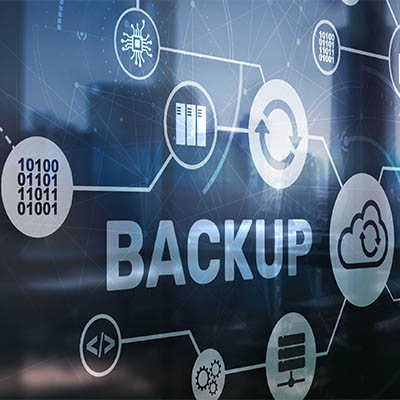Don’t Let Data Backup Concerns Hold Your Business Back
Your business is not unique in the sense that it stores and transmits data during its day-to-day routines. Whether it’s financial information for your clients or employee records, it is more than likely that your business holds some kind of critical data that your operations rely on throughout the workday. Would your operations be able to recover from a sudden loss of data?
While imagining this worst-case scenario might seem intimidating and downright scary, failing to do so is even worse for your business’ continuity. You owe it to everyone who works so hard to keep your business going to do all you can to protect it as best as possible. To work toward this goal, we recommend a solution that all businesses should utilize: data backup and disaster recovery. Data backup is one of those things that you don’t necessarily realize its true value until you need it most, and failing to have it could put your future on the line.
Data Backup vs Disaster Recovery
Data backups are copies of your business’ data that you can restore in the event of a disaster that destroys the original. These are particularly useful when you suffer a data loss scenario or security breach. Data backup has been done with tape for years, a process that involves setting the tape, running the backup, and storing the tapes in a place off-site in the event they are needed.
Tape is on its way out, however, due to issues that are prevalent in the way that it is fundamentally designed. Modern technology has addressed these issues, such as slow implementation and deployment speed, user error, and storage space. The cloud makes everything involved with the data backup and disaster recovery process so much easier by eliminating the possibility of user error, speeding up the process, freeing up on-site storage, and fully automating the process.
Data backup is only one part of a successful disaster recovery solution. You also need to make sure that you are actually able to deploy these backups when they are needed most. Since disasters can disrupt operations so profoundly, you want to have your backups ready to go in the event of data breaches, natural disasters, or user errors. Failing to have these data backups available puts your operations in jeopardy not just from an operational standpoint, but also from a cost perspective when you factor in downtime and lost productivity.
Your disaster recovery solution should aim to minimize downtime through the use of a cloud-deployed backup to temporary hardware. It’s not meant to be a permanent solution; it just keeps you in business while you work to replace it. A common rule you might hear about is the 3-2-1 rule of data backup. You should have three copies of your data ready to go at a moment’s notice: one on-site or on-network, one located in the cloud for ease of restoration, and one in a secure off-site data center. This redundancy makes for an ideal solution and certainly one that minimizes downtime and data loss.
Implement BDR Today
A data backup and disaster recovery solution like BDR is the best way to approach your business’ continuity concerns. ResolveIT has the knowledge and expertise to walk you through this process every step of the way, from determining your specific backup needs to the deployment of solutions. To learn more, reach out to us.



